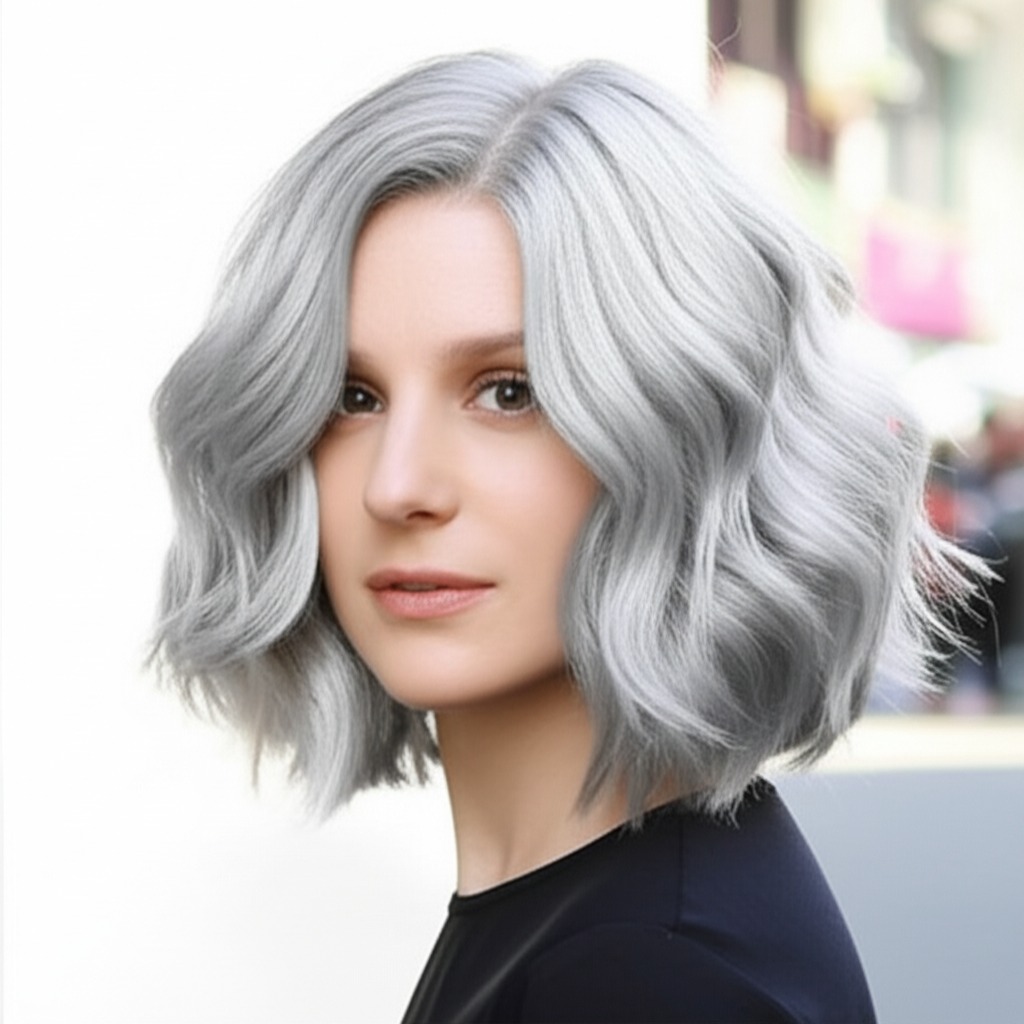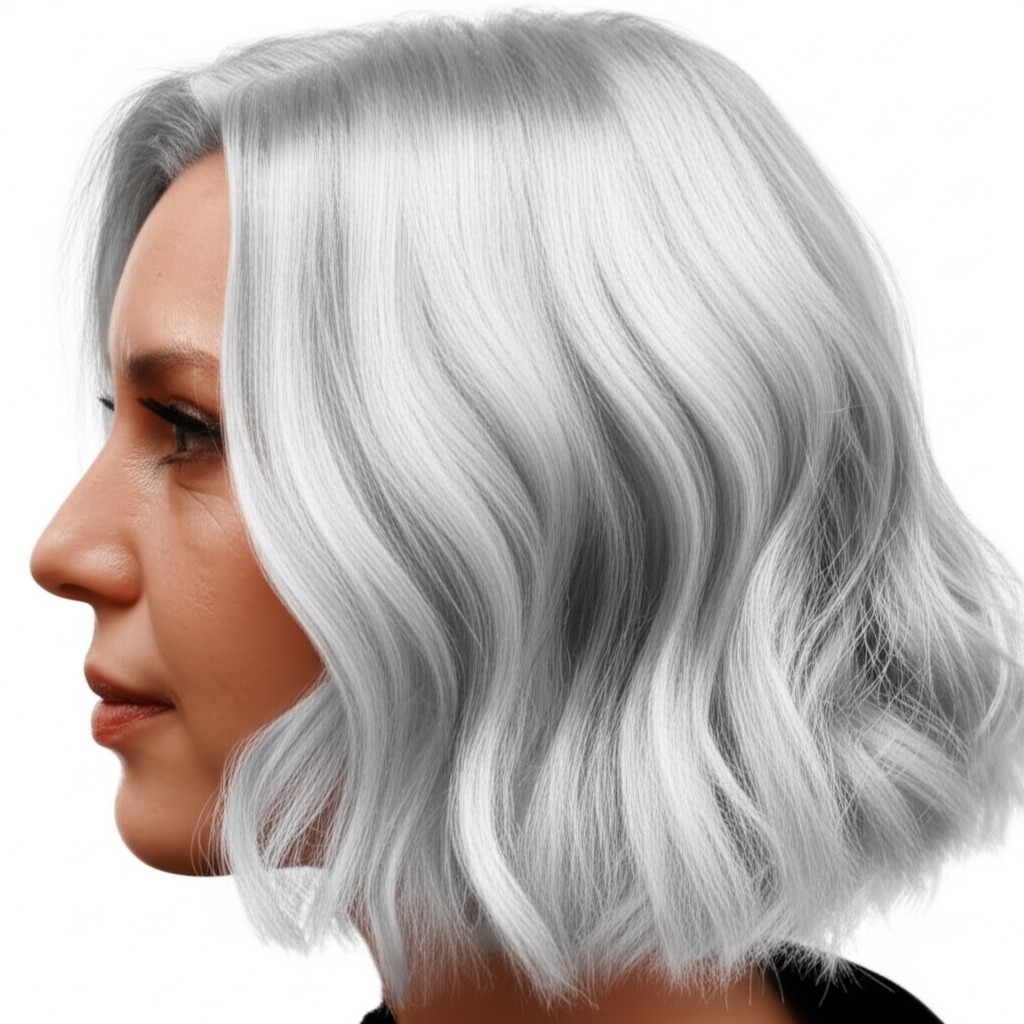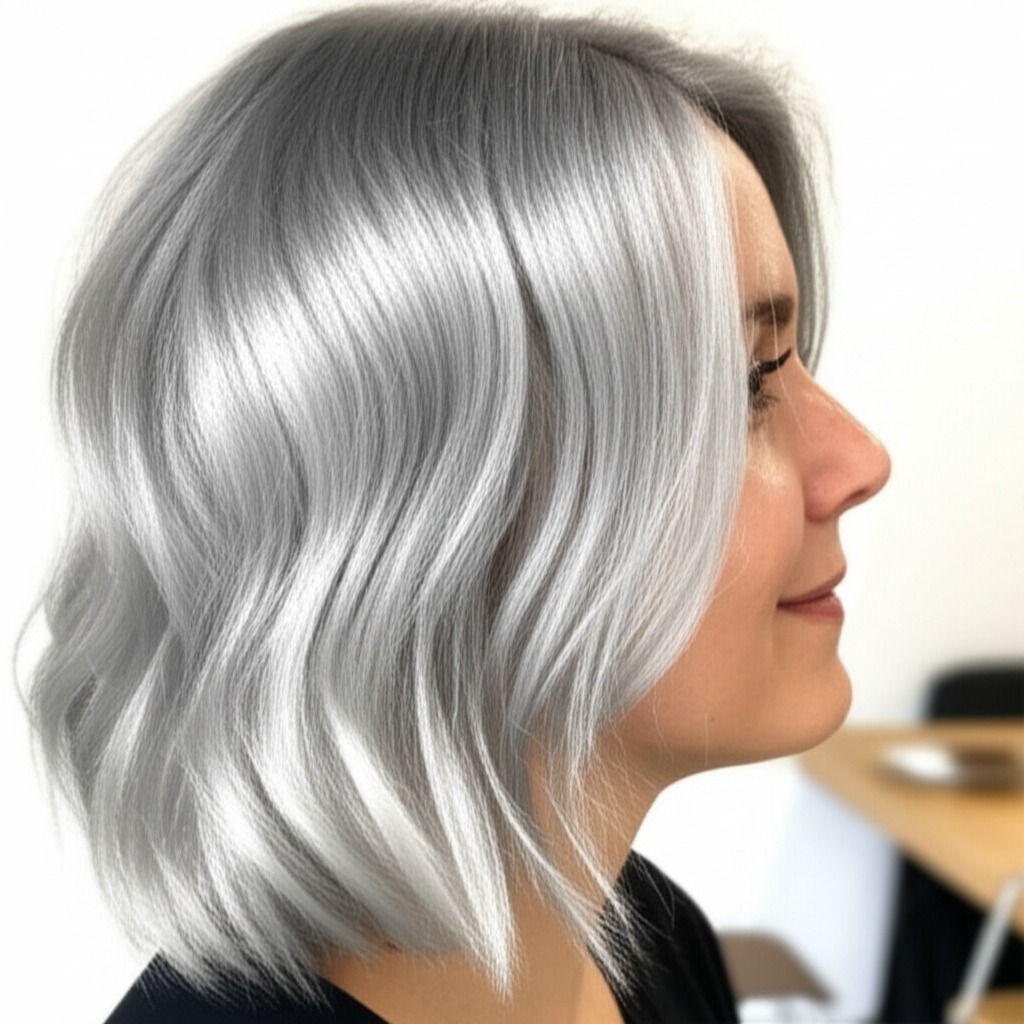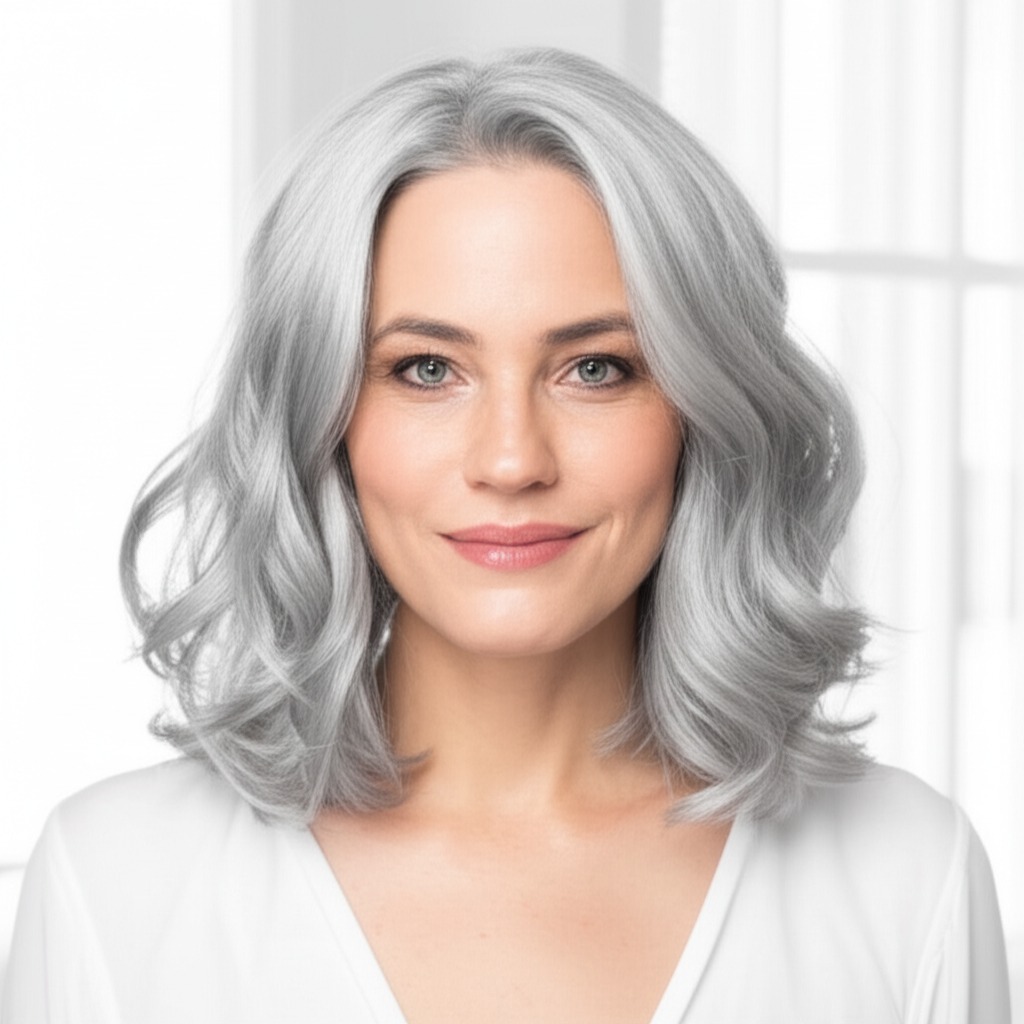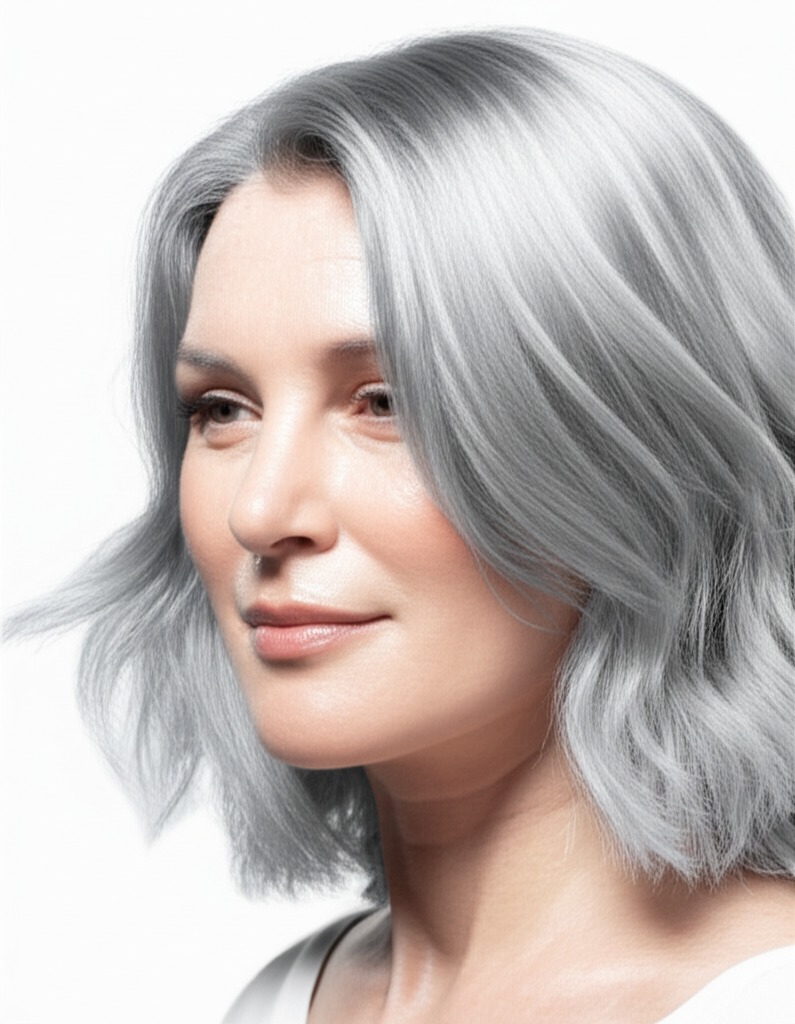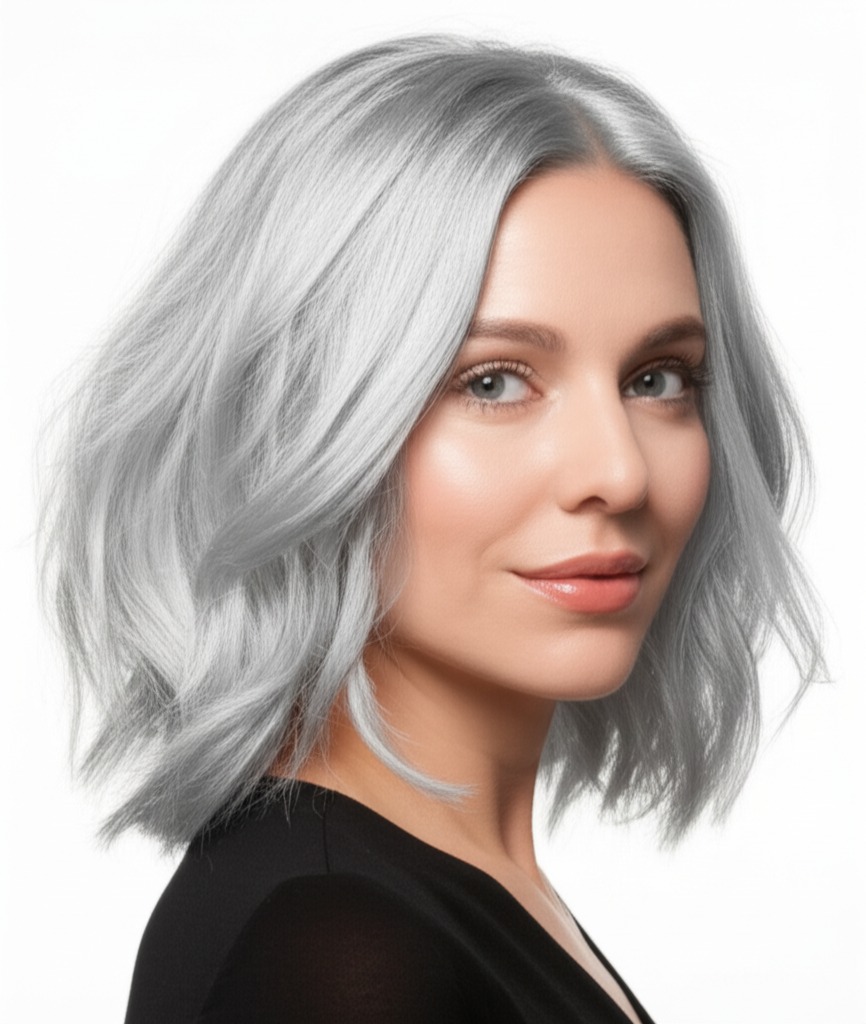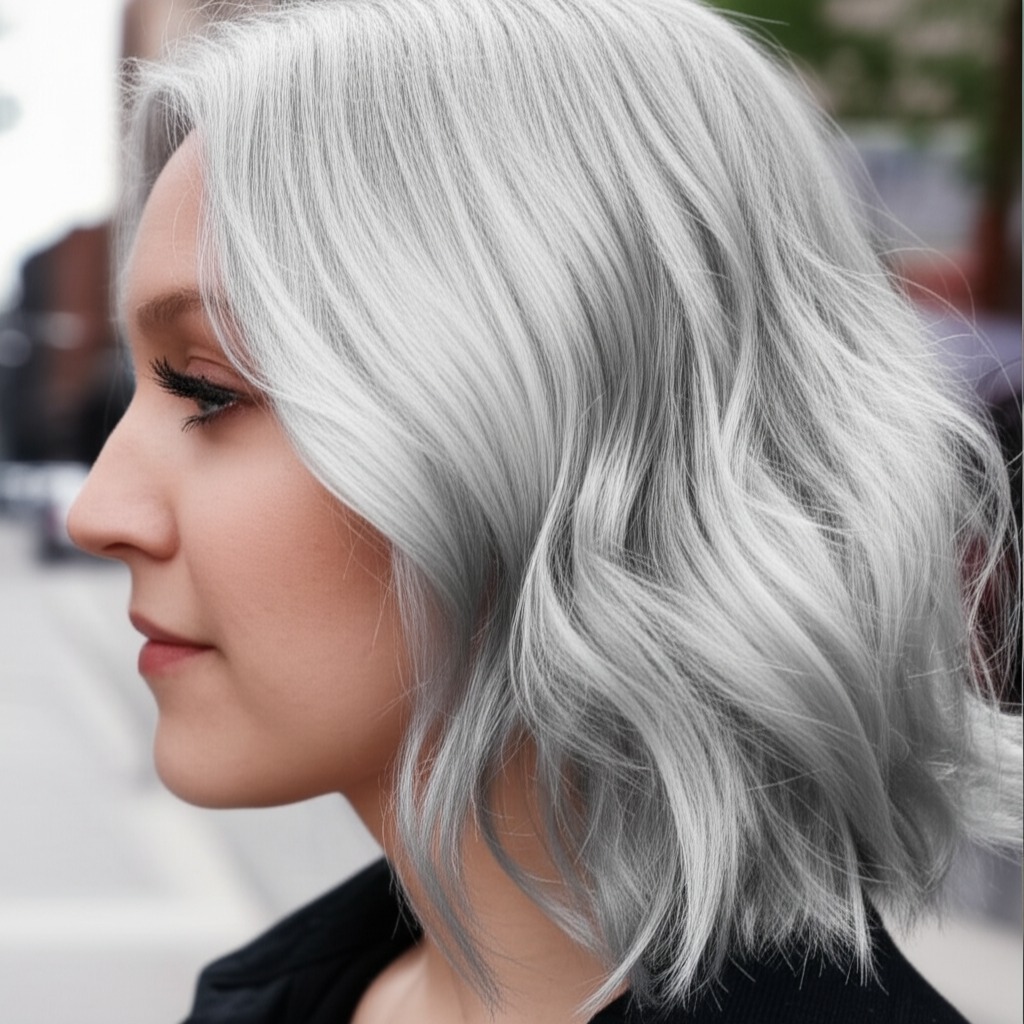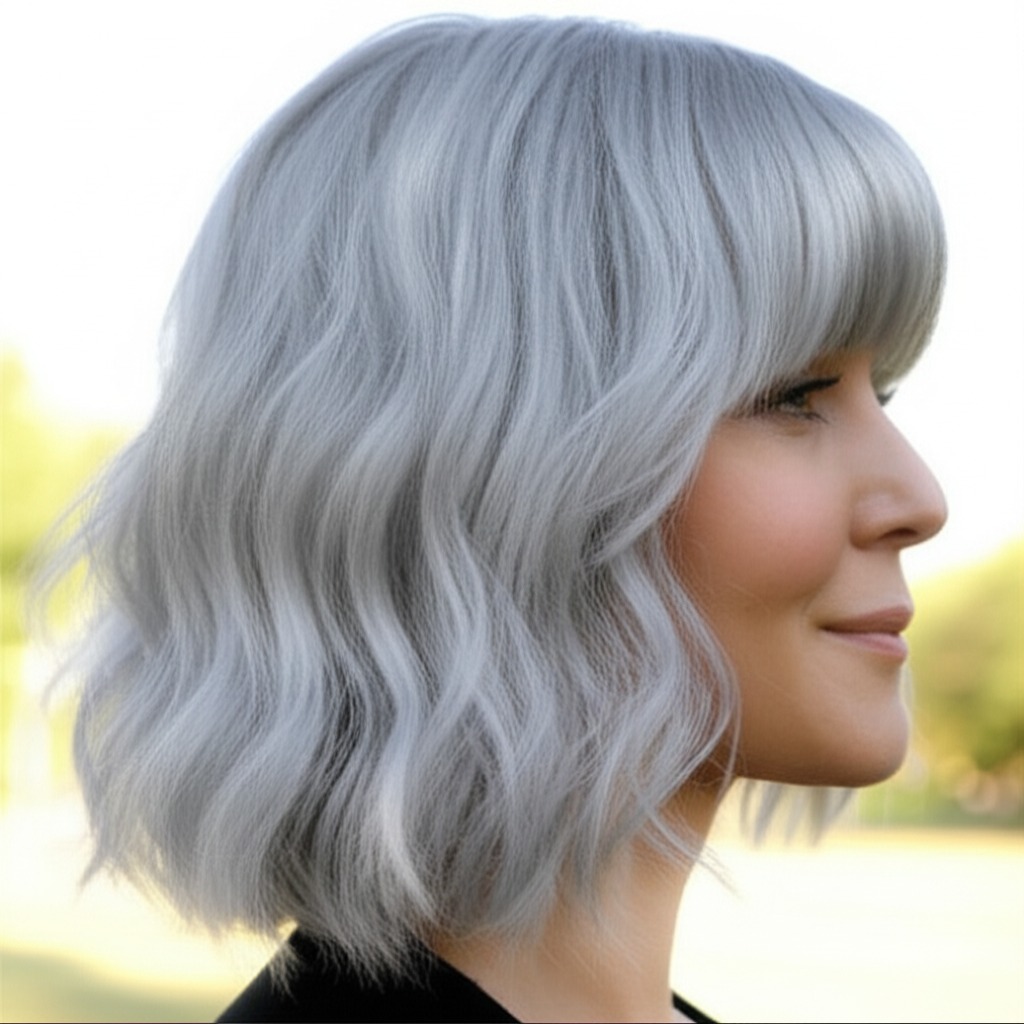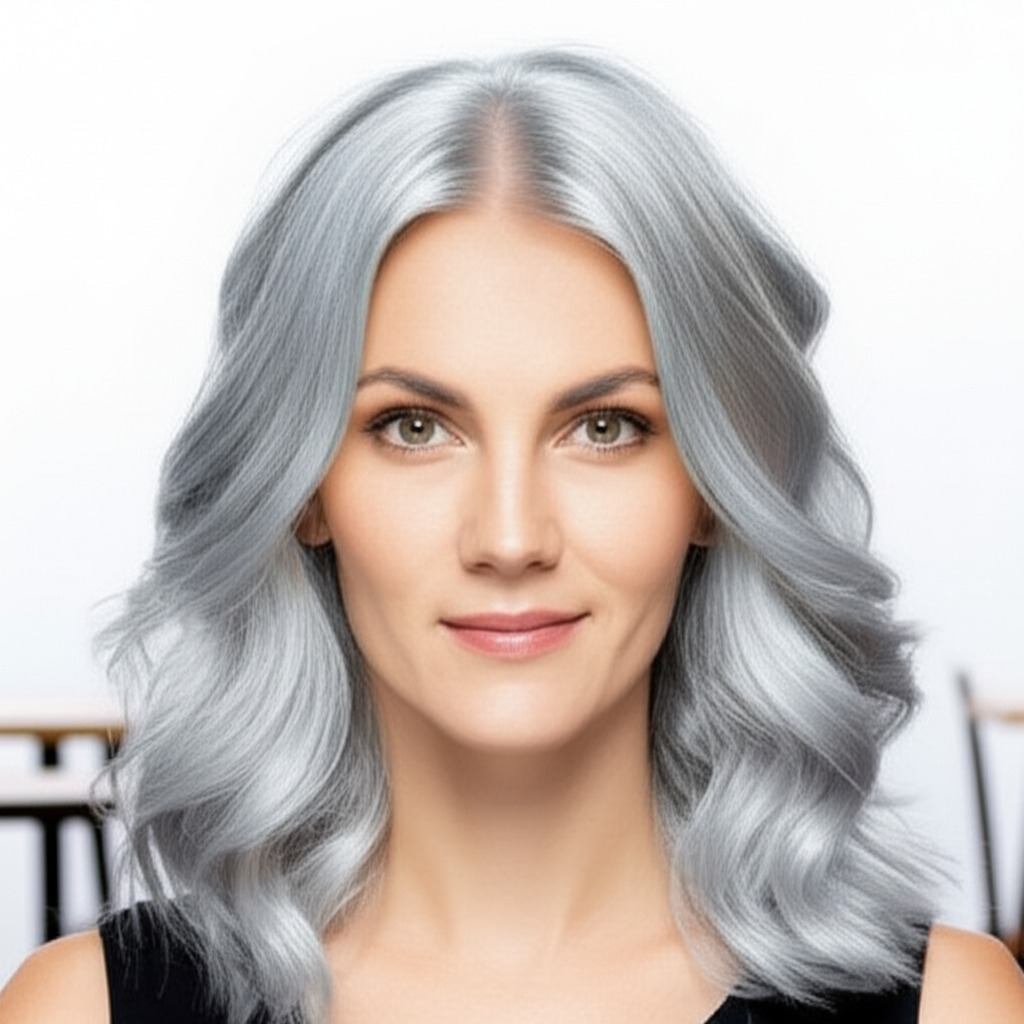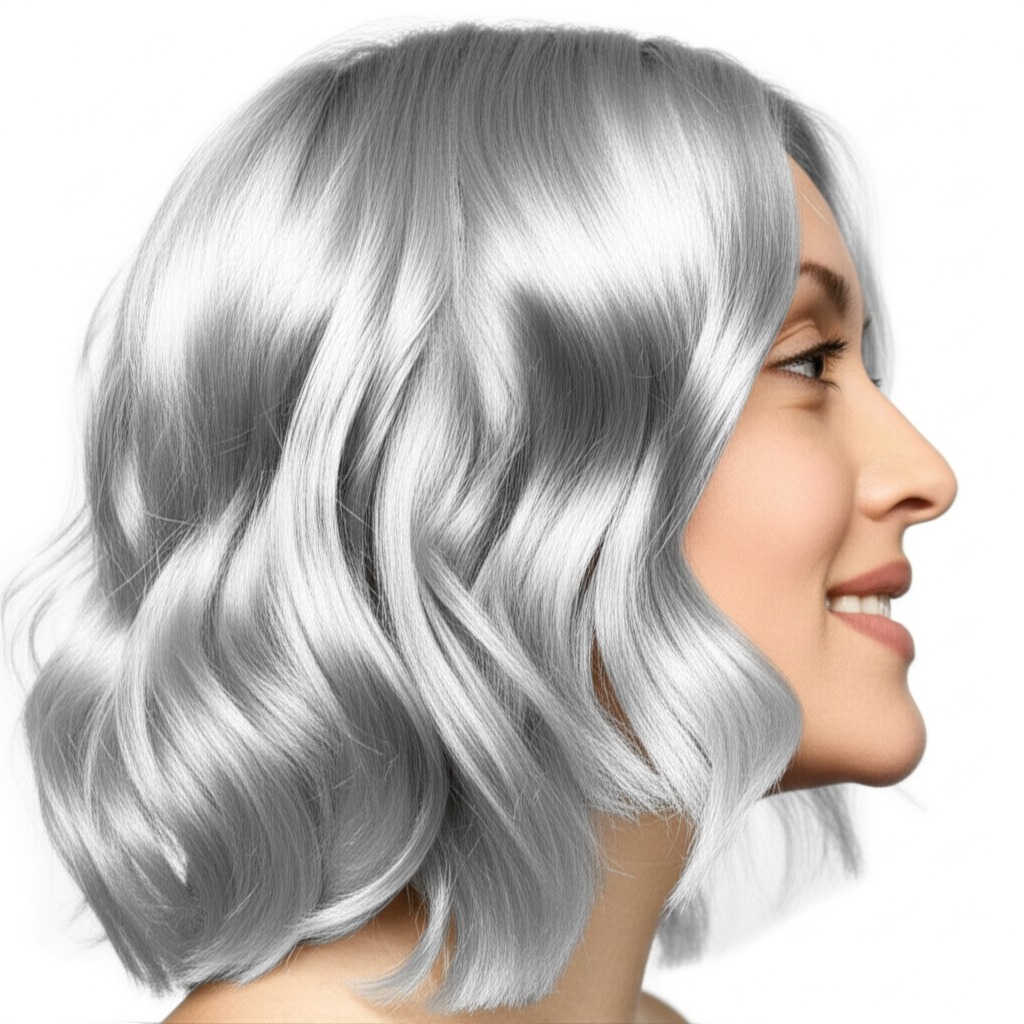#Silver Siren: A Guide to Achieving Gorgeous Gray-Inspired Hair
Silver hair is having a moment! It's more than just gray; it’s a fashion statement – cool, edgy, and undeniably chic. But achieving that perfect silver look requires understanding the nuances of this color family. This guide will walk you through everything you need to know, from choosing the right shade to keeping your silver looking its best.
#1. Understanding Silver Shades: Depth & Undertone
"Silver" isn't one single color; it’s a spectrum! It all comes down to undertones and depth.
- Undertones: Silver hair primarily leans cool. This means it has blue, violet, or even lavender hints. While warmer silvers (with more neutral tones) exist, they are less common and require extra care to avoid looking brassy.
- Cool Silver: The most classic silver look – think icy and ethereal. Best for those who naturally have cool undertones in their skin.
- Neutral Silver: A softer, slightly warmer take on silver. Can work well with a wider range of skin tones but still needs careful balancing to avoid brassiness.
- Warm Silver (Rare): Contains hints of gold or beige. Requires very specific starting levels and techniques – best left to experienced colorists.
- Depth (Levels): This refers to how light or dark the silver is. Hair color ranges are numbered 1-10, with 1 being the darkest black and 10 being the lightest platinum blonde. Silver shades typically range from level 7 (light ash brown) upwards towards level 10 (very pale).
- Lower Levels (7-8): A more subtle silver – often achieved through blending techniques like balayage or highlights on a darker base.
- Mid Levels (9-10): The classic, bright silver look we see most frequently in fashion editorials.
#2. Who Does Silver Hair Flatter?
While anyone can have silver hair, certain features make it particularly striking.
- Skin Tone & Undertone:
- Cool Skin Tones (pink, red, or blue undertones): Silver looks incredible! Think fair skin with rosy cheeks or olive skin with cool-toned highlights.
- Neutral Skin Tones: Can often pull off silver but require careful color matching to avoid looking washed out.
- Warm Skin Tones (golden, yellow, or peach undertones): Silver can work if handled expertly and with a carefully chosen technique that incorporates more neutral tones. Otherwise, it risks clashing and emphasizing warmth in the skin.
- Eye Color: Silver hair complements many eye colors!
- Blue & Gray Eyes: Creates a stunning monochromatic look.
- Green Eyes: The cool contrast can be incredibly striking.
- Brown Eyes: Can create a dramatic, high-contrast effect.
- Natural Level Starting Point: The lighter your natural hair color, the easier (and less damaging) it will be to achieve silver.
- Levels 1-4 (Dark Brown/Black): Requires significant lightening and is best approached with multiple sessions over time.
- Levels 5-7 (Medium Brown): A good starting point – still requires lightening, but less drastic than darker bases.
- Levels 8-10 (Light Blonde/Gray): The easiest transition! May only require a toner to achieve the desired silver shade.
#3. Technique Options: From Subtle to Statement
The right technique is crucial for achieving your silver goals.
- Single Process: A uniform color application, best suited for those already quite light (levels 8-10) who just need a tonal shift.
- Highlights/Lowlights: Adds dimension and movement. Lowlights can soften the overall look if you're concerned about being too stark.
- Babylights: Very fine highlights that create an all-over brightening effect – ideal for those wanting a subtle silver touch.
- Gloss/Toner: This is your best friend! Toners deposit color and refine the shade, correcting brassiness or adding cool undertones. Essential for maintaining silver hair.
- Balayage-Effect: Hand-painted highlights that create a soft, blended look. Great for those wanting a more natural transition to silver, especially on darker bases. Allows for lower maintenance root growth.
- Solid Color: A bold and dramatic statement – best achieved with multiple sessions or if starting from a very light base.
#4. Maintenance & Longevity: Planning Ahead
Silver hair requires commitment!
- Wash Frequency: Less is more! Aim for 2-3 washes per week using color-safe shampoo (see section 6).
- Toner Refresh: Toners fade quickly, typically needing a refresh every 4-8 weeks.
- Root Growth Pacing: Discuss with your stylist how to manage root growth – blending techniques can extend the time between full color appointments.
- Budget/Time Planning: Silver hair is an investment! Expect higher costs and longer appointment times compared to natural hair colors, especially if starting from a darker base. Budget for regular toner appointments (around $50-$150) and potentially multiple lightening sessions ($150 - $400+ per session).
#5. Seasonality & Pairing with Cuts: Style it Right!
- Seasonal Tweaks: In winter, silver can look even more striking against paler skin. In summer, consider a slightly warmer (more neutral) tone to avoid looking too harsh.
- Cut Pairings:
- Bob/Lob: A sharp bob or lob emphasizes the coolness of silver hair.
- Long Layers: Adds movement and dimension – perfect for showcasing balayage techniques.
- Pixie Cut: Creates a bold, edgy look – ideal for those with confidence!
- Event Occasions:
- Work: A more subtle silver (lower levels, blended roots) is often best.
- Daytime: A brighter silver can be fun and stylish.
- Evening: Embrace the drama! A high-shine, icy silver looks stunning under party lights.
- Weddings: Consider a softer, more romantic tone – avoid anything too harsh or edgy.
#6. At-Home Care: Protecting Your Investment
- Sulfate-Free Shampoo & Conditioner: Sulfates strip color and moisture. Invest in quality color-safe products.
- Clarifying Cadence: While sulfate-free is key, occasional clarifying (every 4-8 weeks) removes buildup from styling products.
- Heat Protection: Essential! Apply heat protectant before using any hot tools.
- Color-Safe Styling Tips: Avoid excessive heat styling. Opt for air drying or low-heat settings when possible. Use silver-enhancing glosses at home (follow product instructions carefully).
- Product Checklist: Sulfate-free shampoo, conditioner, leave-in conditioner/detangler, heat protectant spray, purple shampoo (for brassiness), color-depositing gloss.
#7. Common Pitfalls & How to Avoid Them
- Brassiness: The biggest enemy of silver hair! Use purple shampoo regularly and book toner appointments as needed.
- Banding: Uneven lightening can create noticeable bands of color. A skilled stylist will use techniques like foil highlights or balayage to minimize this risk.
- Patchiness: Can occur when the base is unevenly lightened. Requires multiple sessions and a careful approach from your stylist.
#8. Pros & Cons: Weighing Your Options
Pros:
- Unique & Stylish: Silver hair makes a statement!
- Versatile: Can be adapted to suit different styles and personalities.
- Highlights Features: The cool tones can accentuate certain facial features.
Cons:
- High Maintenance: Requires regular toner appointments and careful at-home care.
- Fade Risk: Silver pigment fades quickly, requiring frequent touch-ups.
- Potential Damage: Lightening processes can damage hair – prioritize healthy hair practices.
#9. Salon Consultation Script: Setting Expectations
Before you commit to silver hair, have a thorough consultation with your stylist! Here are some prompts to guide the conversation:
- “I’m interested in achieving a silver look. Can we discuss my natural level and what that means for the process?”
- "What techniques would be best suited for my hair type and desired result?"
- "How long will it take to achieve this color, considering my current hair color?"
- "Can you show me examples of different silver shades to help me choose a tone I like?"
- “What is the estimated maintenance schedule (toner appointments, etc.)?”
- “What products do you recommend for at-home care?”
#10. FAQs: Your Silver Hair Questions Answered
- Can I go silver if my hair is naturally dark brown? Yes, but it will require multiple lightening sessions and a significant time commitment.
- How often should I use purple shampoo? Start with once or twice a week, adjusting based on how quickly your color fades.
- Will silver hair damage my hair? Lightening can cause damage if not done properly. Choose an experienced stylist who prioritizes hair health and uses quality products.
- Can I do this at home? While possible for those with light bases, achieving a professional-looking result on darker hair is best left to the experts.
- How long will silver hair last before needing a touch-up? Typically every 6-12 weeks, depending on your chosen technique and how quickly your color fades.
- Is silver hair suitable for all ages? Absolutely! It’s about finding the right shade and style to complement your individual features and personality.
Achieving gorgeous silver hair is a journey – enjoy the process and embrace the transformation!
